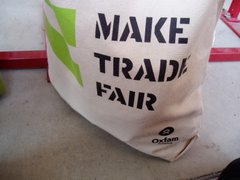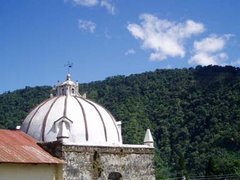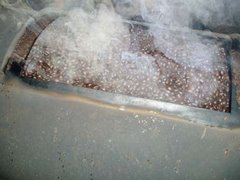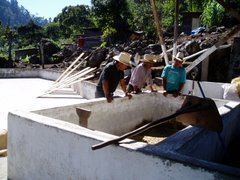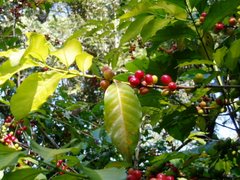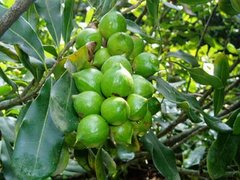
I just returned from a delegation to El Salvador about a week ago. U.S. influence, through CAFTA and other means, over El Salvador's now dolarized economy has had disastrous effects on the poor of this small, densely populated Central American country (about the size of Massachusetts packed with around 7 million people). Many of the producers and activists our group had the opportunity to speak with stated that El Salvador no longer has any viable crops that trade well on the world market. Coffee and other commodities are no longer the strong exports they once were due to changes in market prices & oversupply problems in the global economy, in addition to agricultural subsidies awarded to farmers in the U.S. and Europe that aggravate already pronounced trade imbalances. One mantra we heard repeated time after time is that currently El Salvador's biggest export is people. According to an investigation performed by the Jesuit University of Central America (the UCA), 700 people (finding no options for enough work to feed their families) leave El Salvador headed for the United States every day. Many end up stuck in Guatemala or Mexico along the way. Last year 14,000 Salvadorans were deported by the U.S. government. Deported individuals are often viewed as outcasts and sometimes criminals in the communities they return to. So, the primary contribution to the Salvadoran economy now (like the experience of Mexico/NAFTA) -- supporting many poor families in El Salvador at varying degrees -- is the arrival of remittances from family members in the U.S.
Remittances have created a new system of dependence on family incomes now being earned in the U.S. -- income that is not able to be gathered or generated by activities in the country due to lack of jobs and inappropriate/insufficient economic policies, programs or infrastructure, leaving many people in the society idle. The main message from everyone we talked to is that migration is destroying the family in El Salvador and beyond that the entire country because of the profoundly negative consequences for the economy. In general, there is a lack of response by the government because of the powerful dynamic of remittances from the U.S. along with other economic directions taken as a requirement of the free trade agreement.
Global Exchange and other groups have launched campaigns in oppposition to the country-specific free trade agreements currently being debated by our Congress aimed at the Peruvian, Colombian, South Korean economies. The U.S. should change its trade policy in order to avoid further complications that stem from a sinfully unfair global trading system that pursues a preferential option for the rich.
The same action alert also calls on Congress not to renew the Bush administration's fast track trade authority. Furthermore, Global Exchange has most recently called for a moratorium on free trade agreements with hopes to force our lawmakers and politicians to revise or remake our trade policy according to fair trade standards and specifications.





